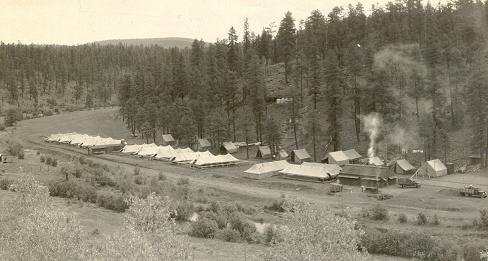 The November-December issue of the Civilian Conservation Corps Legacy Journal ran a terrific article about the Intestate Park bison site and its connection to CCC history. Camp Interstate was established in order to use CCC labor to build roads, trails, shelter houses and other amenities at Interstate Park in northwestern Wisconsin. The archaeological work came about purely by happenstance.
The November-December issue of the Civilian Conservation Corps Legacy Journal ran a terrific article about the Intestate Park bison site and its connection to CCC history. Camp Interstate was established in order to use CCC labor to build roads, trails, shelter houses and other amenities at Interstate Park in northwestern Wisconsin. The archaeological work came about purely by happenstance.
In the summer of 1936, according to the article by Marlin Hawley, enrollees of Company 633 were digging a ditch to install a pipe. In the process of digging the ditch, the enrollees unearthed large animal bones and, before too long, having uncovered more and more bones, the camp superintendent decided to consult with zoologists at the University of Minnesota. The zoologists recognized the bones as those of some sort of bison, perhaps an extinct species.
Digging resumed and in short order a large hammered copper pike and two small spearheads were found amongst the buried bones at the Interstate Park site. According to Hawley, with the discovery of the of bison bones, the copper pike and the small spearheads “the CCC had unwittingly discovered one of the most enigmatic associations yet of artifacts and a vanished species.”
As it turns out, the name Interstate Park has a special significance to me all the way out here in the desert southwest. It seems that another bit of archaeological salvage work has resulted in the rescue of dozens of photos depicting CCC work at Interstate Park. It seems that the previous owner’s family was planning to dump them into the trash when Mr. Arley Ross, a member of NACCCA Chapter 44, saved them. Arley saved the whole lot of photos, along with a few postcards and it is only through his diligence several years ago that you are now able to see some of those images here.
In all the time I’ve had these photos, I never imagined that a significant archaeological discovery was also part of the CCC work at Interstate Park.
Perhaps the ditch in this picture is part of the work that ultimately resulted in the discovery of the bison bones. If you look carefully, you’ll see the sign that reads “Interstate Park Camp Grounds.” Working in the snow like this must have been tough business!
 Here’s another image of enrollees digging a ditch.
Here’s another image of enrollees digging a ditch. Here’s a picture of the motor pool, where truck drivers appear to be shining up their trucks for inspection.
Here’s a picture of the motor pool, where truck drivers appear to be shining up their trucks for inspection. Here’s an image of three enrollees posing by a truck. The truck has “Camp Pattison” painted above the windshield. It’s unclear whether this was taken at the Interstate Park camp or somewhere else.
Here’s an image of three enrollees posing by a truck. The truck has “Camp Pattison” painted above the windshield. It’s unclear whether this was taken at the Interstate Park camp or somewhere else. Here’s a picture of three fresh faced enrollees who look like they might be trying on their CCC work clothes for the first time.
Here’s a picture of three fresh faced enrollees who look like they might be trying on their CCC work clothes for the first time. Here’s a group of enrollees posing in the field with their foreman (the distinguished older looking gentleman in the sweater and coat).
Here’s a group of enrollees posing in the field with their foreman (the distinguished older looking gentleman in the sweater and coat). Here’s a picture that seems to show that it wasn’t all hard work at Camp Interstate. The previous owner of the photos wrote “Homebrew” on this picture, so we can assume they’re not drinking milk. It’s fun to note that one fellow is drinking out of a gravy boat and the fellow on the far right is holding a pair of football or baseball cleats.
Here’s a picture that seems to show that it wasn’t all hard work at Camp Interstate. The previous owner of the photos wrote “Homebrew” on this picture, so we can assume they’re not drinking milk. It’s fun to note that one fellow is drinking out of a gravy boat and the fellow on the far right is holding a pair of football or baseball cleats. The Hawley article points out that the bison excavation project was the largest archaeological project conducted by the CCC in Wisconsin and the assemblage of bison bones is the largest in the eastern U.S. It’s safe to say that the “forest army” did more than forest work.
The Hawley article points out that the bison excavation project was the largest archaeological project conducted by the CCC in Wisconsin and the assemblage of bison bones is the largest in the eastern U.S. It’s safe to say that the “forest army” did more than forest work.
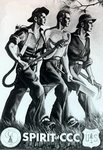
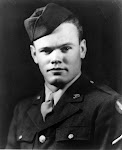





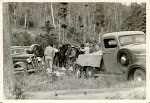
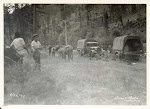



 Our inaugural Spotlight Site is an interesting article entitled
Our inaugural Spotlight Site is an interesting article entitled 